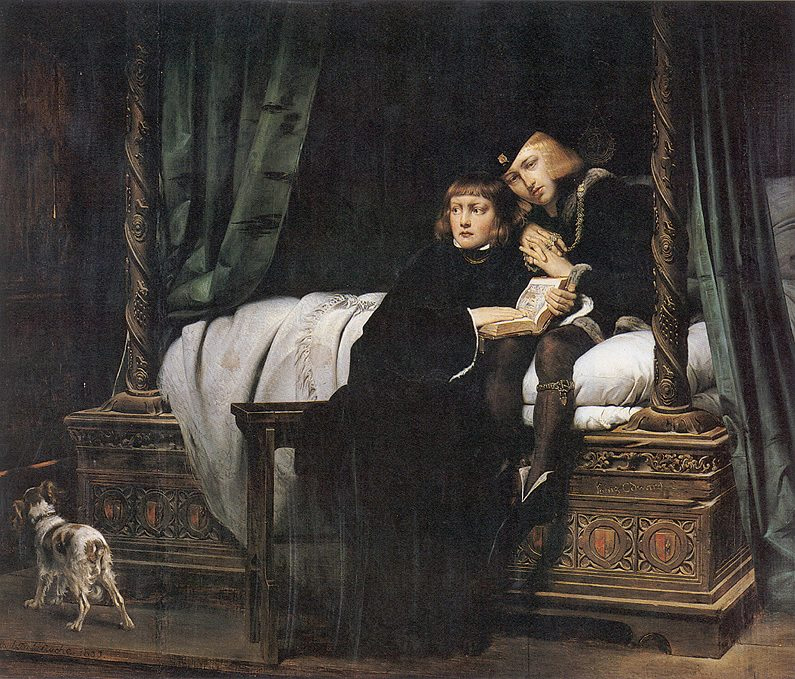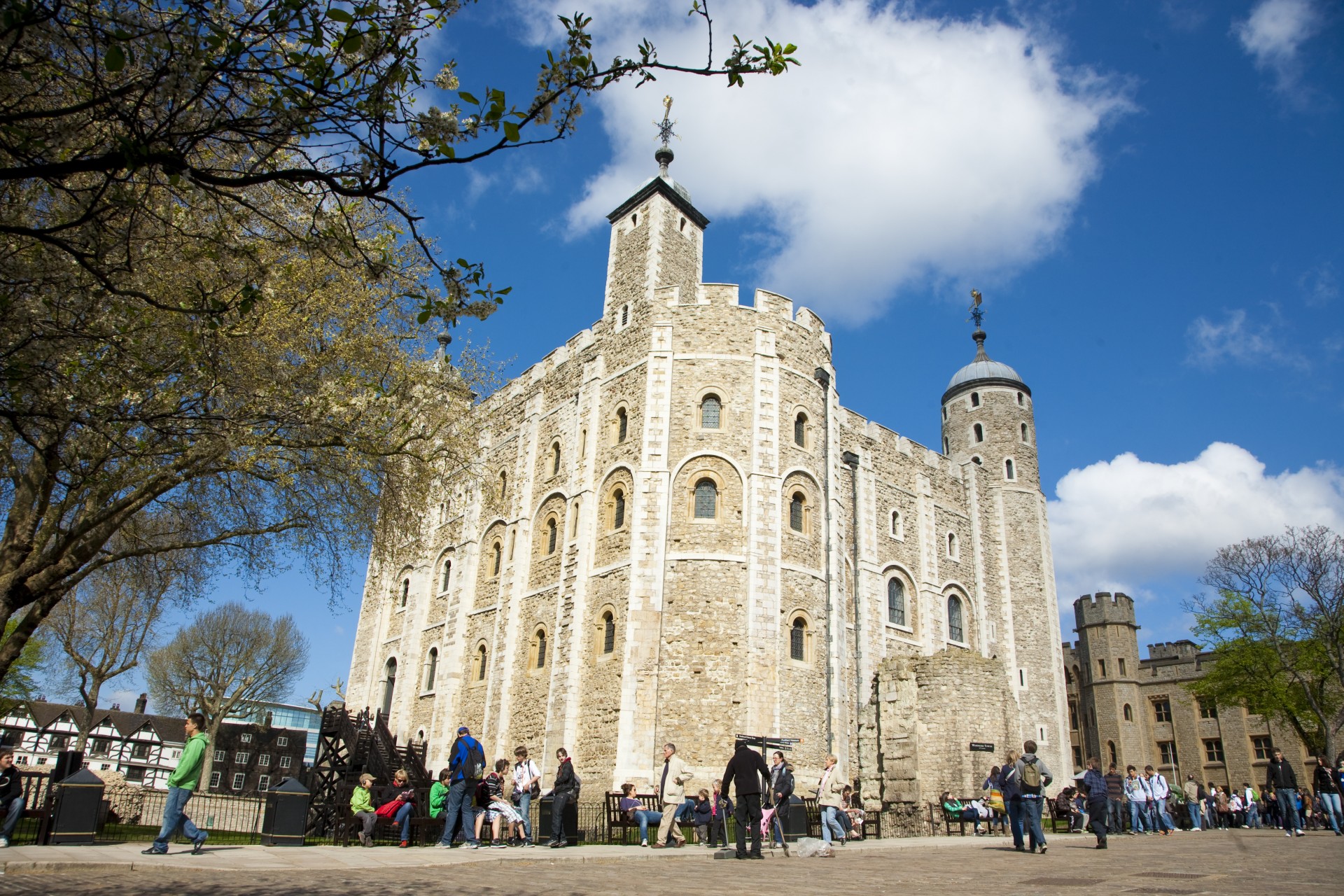Yeoman Warders, often referred to as ‘Beefeaters,’ conduct their own tours of the Tower of London. However, they are not allowed to say that Richard III had ordered the killing of his own nephews, who are often referred to as ‘the Little Princes in the Tower.’ This is because the Ricardian Society, who believe Richard was innocent of the crime and had been unjustly accused of it by William Shakespeare and others, dispute this view and will come down on anyone who supports it. This just goes to show how a small but vocal group can exert influence and proclaim the innocence of one who is an obvious villain.
Beefeaters can only get around the ban by referring to the killing of the princes as ‘one of the great mystery stories of English history,’ which does not imply that Richard was the murderer. After the disappearance of the princes from view, Richard was free to claim the throne for himself and was crowned King of England for a short reign from 1483, when his brother King Edward IV died, to 1485, when Richard was himself killed at the Battle of Bosworth by Henry Tudor, who became King Henry VII. He was the father of Henry VIII and grandfather of Elizabeth I, who was queen during Shakespeare’s early writing career.
In truth, Shakespeare had little choice but to make Richard the villain of the piece. He was merely towing the official line that Richard was the guilty party, which had been created by Sir John More, a prominent judge and lawyer who was also the father of Sir Thomas More. More Senior represented Sir James Tyrrell, who confessed to the killing of the princes on the orders of Richard, and his son wrote a history which condemns Richard as the murderer.
 King Edward V and the Duke of York (Richard) in the Tower of London by Paul Delaroche. Photo Credit: © Public Domain via Wikimedia Commons.
King Edward V and the Duke of York (Richard) in the Tower of London by Paul Delaroche. Photo Credit: © Public Domain via Wikimedia Commons.
William Shakespeare created one of the most famous villains in his whole canon when he portrayed Richard, the youngest child of Edward, Duke of York and notoriously a hunchback king. It is one of Shakespeare’s longest plays but is also one of his most popular and is performed more times than any other. Many famous actors have played Richard, from the original wicked king, Richard Burbage, who was a friend and colleague of the playwright, up to more recent actors such as Sir Laurence Olivier, who made a famous film of the play, and Antony Sher, who emphasised his physical disabilities. Today, Richard is more likely to be portrayed by an actor who is actually disabled rather than one pretending to be. (Examination of Richard’s skeleton showed that he was indeed affected by scoliosis.)
The Tragedy of King Richard III brings Shakespeare’s cycle of medieval history plays to a conclusion. Henry is crowned, the Tudor line is established, and peace comes to England. At the end of his career, Shakespeare revisited the history of England for his final play Henry VIII, about the famous Tudor king, two of whose wives were executed at the Tower of London. They were Catherine Howard and Elizabeth’s own mother, Anne Boleyn.
After the Battle of Bosworth, Henry Tudor becomes Henry VII, while Richard III’s body is unceremoniously dumped into an unmarked grave at the nearby Leicester Abbey. However, in 2012, his bones were rediscovered by archaeologists and interred in Leicester Cathedral, near where a statue of him and a museum dedicated to his story stand. A group of Ricardians attempted to have the burial moved to York Minster, where Richard had a lot of support. They failed, however, in a long legal battle which ended two years later in 2014, when the High Court refused to accept the contention that he should be buried in York. Leicester (which had the least visited cathedral in England) was probably relieved at this outcome as it encouraged people to visit the city and maybe the nearby Bosworth field.
As a Blue Badge Tourist Guide, I have never had much time for the view that Richard was an innocent and misunderstood figure. In other words, I am not a Ricardian, although I admit that some of my colleagues are. Like Winston Churchill’s ancestor, John Churchill, who was the first Duke of Marlborough and won a great victory for Britain in 1704 at the Battle of Blenheim, I learned a lot of my history from Shakespeare and stand by it as correct. Today, however, Shakespeare’s historical accuracy has been questioned by many.
 The White Tower was the original Tower of London. Photo Credit: © Historic Royal Palaces .
The White Tower was the original Tower of London. Photo Credit: © Historic Royal Palaces .
In The Tragedy of Richard the Third, Richard’s own mother, the Duchess of York, says to his face, in a famous passage: “Bloody thou art, bloody will be thy end”. These lines are quoted in the audio presentation at the Tower of London, where the princes were imprisoned when Richard declared them illegitimate and possibly (definitely in my view) had them killed.
In 1674, workmen discovered the skeletons of two boys who had been secretly buried in the White Tower at the Tower of London. It was assumed that these were the bones of the Princes in the Tower, and King Charles II had them reinterred at Westminster Abbey, where you can still see them in the chapel that holds the graves of Elizabeth and her half-sister Mary. Nearby is Innocent’s Corner, where several royal children who died young are buried.
Doctors have confirmed that these are the bones of two boys who would have been aged around twelve and nine, the same ages as the princes who disappeared from view in 1483 and were never seen alive again. However, DNA testing did not exist when this judgement was made in the 1920s, and the royal family never agreed to have the bones tested to prove that they were indeed the remains of the sons of King Edward IV. This refusal, which did not apply to the skeleton of Richard III when it was discovered in Leicester and which showed that it was indeed that of King Richard, has given hope to the Ricardians, who believe that Richard was unjustly and unfairly blamed for their deaths. The Tower of London holds many secrets, they say, and the bones could be those of two other boys buried there.
 The Two Princes Edward and Richard in the Tower, 1483, by Sir John Everett Millais. Photo Credit: © Public Domain via Wikimedia Commons.
The Two Princes Edward and Richard in the Tower, 1483, by Sir John Everett Millais. Photo Credit: © Public Domain via Wikimedia Commons.
This has always seemed like clutching at straws to me. The belief that the bones interred at Westminster Abbey were not those of the young King Edward V and his brother Richard Duke of York received another blow in late 2024 with the revelation that the will of Margaret Capel included a gift of the chain of office of Edward V. She was the sister-in-law of Sir James Tyrrell, who worked for Richard III and confessed to the murder, claiming that Richard had ordered it. Tyrrell was John More’s client and probably confessed to him too.
Tyrrell’s confession has often been questioned by Ricardians, who see it as unreliable. However, it is very unlikely that young Edward would have voluntarily given up his chain of office and Tyrrell’s connection to it fingers him – and by implication his boss Richard III – as the killers. He may have used the chain to prove that he had done the deed as instructed.
It is impossible to believe that the sons of Edward IV, rightful heirs to the crown of England, would have been killed without the knowledge and acquiescence of the man who had been appointed as their protector and regent. This was Richard III, who was surely responsible for their killing. If that explanation was good enough for Shakespeare, it is good enough for me.







Leave a Reply